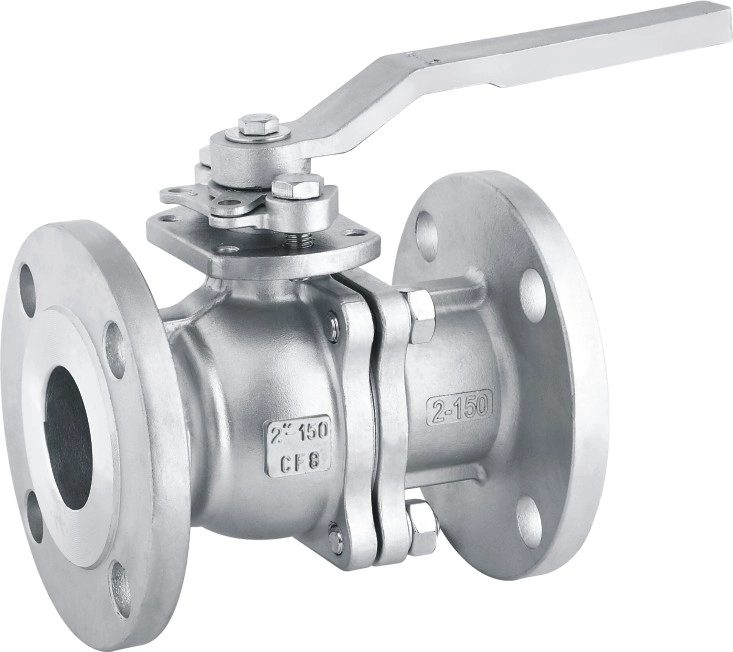How Flanged Ball Valves Control Flow in Industrial Settings

Flanged ball valves are key parts in fluid management systems. They are made for precise flow control and reliable sealing. People often use these valves in industries like oil refining, chemicals, and water treatment. This is because they are versatile and work well. Their flanged design guarantees a secure connection. It also fits well with different piping systems.
Components of Flanged Ball Valves
Flanged ball valves have several important parts. These let them work well. The main body typically uses tough metals like stainless steel or carbon steel. These metals last long. They handle pressure and temperature shifts. The valve features a round ball. This ball has a hole through its center. That ball is the main piece for controlling flow. It’s held in place by mechanisms. These can be fixed or floating. Which one depends on the valve type.
The sealing system often uses durable seat materials for tight, two-way sealing. These seats have relief slots to handle pressure imbalances from trapped gas in the valve body. Other features, like anti-static devices and stems that won’t blow out, improve safety and reliability during operation.
How Flanged Ball Valves Work
Manual Operation
In manual mode, flanged ball valves use a lever or wheel to turn the ball inside the valve. A 90-degree turn moves the valve from fully open to fully closed. This simple action allows quick control with little effort.
Automated Operation
Pneumatic/Hydraulic Actuators
In industrial settings, pneumatic or hydraulic actuators are often used for automation. These devices use compressed air or fluid to rotate the ball. This allows precise flow control without manual effort. It’s especially useful in systems needing frequent adjustments.
Electric Motors
Electric actuators offer another automation option. They use motors to control the valve’s movement. These are great for remote operations and can connect to automated control systems for better efficiency.
Ball Rotation
The main function of flanged ball valves comes from the ball’s rotation inside the valve body. When the ball’s hole aligns with the pipeline, fluid flows freely. Turning the ball 90 degrees blocks the flow completely.
Flow Control
Full-Bore Valves
Full-bore flanged ball valves have a bore diameter matching the pipeline. This reduces pressure loss and turbulence, making them ideal for applications needing smooth flow.
Reduced-Bore Valves
Reduced-bore valves have a smaller bore than the pipeline. This may cause slight pressure drops. However, it saves costs by using less material and making the valve smaller.
Sealing
The sealing system in flanged ball valves ensures no leaks under different conditions. Live-loaded stem seals adjust automatically to account for wear or environmental changes. Fire-safe designs with graphite seals meet API 607 standards. These provide extra safety in extreme situations.
Reverse Operation
Flanged ball valves support two-way flow control. They work effectively regardless of fluid direction. This makes them versatile for complex piping systems where flow direction may change.
Flanged ball valves combine sturdy construction with efficient design. They deliver reliable performance across various industrial uses. Understanding their components and operation helps users choose and use them effectively.
Critical Design & Maintenance Factors
Material Compatibility
Choosing the right materials is key to ensuring flanged ball valves work well and last long. The valve body is typically made from strong materials like stainless steel or carbon steel. These handle high pressures and temperatures. Standard two-piece valve bodies are investment-cast stainless steel, solution-annealed for top quality and strength. These materials resist corrosion, making them suitable for industries like chemicals, oil refining, and water treatment.
Sealing materials are also important. Flanged ball valves use durable seat materials for tight, two-way sealing. The seats have relief slots to manage pressure from trapped gas in upset conditions. This ensures reliable performance even in changing environments.
Seal Integrity
Seal integrity is crucial for leak-free operation. The sealing system includes live-loaded stem seals. These use Belleville washers to adjust packing automatically for wear and environmental changes. This reduces maintenance needs and ensures consistent performance over time.
For added safety, fire-safe designs use graphite stem seals that meet API 607 standards. Secondary graphite body seals and flexible graphite packing prevent leaks through body joints and the stuffing box. These features make flanged ball valves a dependable choice for critical applications where safety is essential.
Avoiding Cavity Clogs
Preventing clogs in the valve cavity is vital for efficiency. The internal design includes anti-static devices and blowout-proof stems for better reliability. Anti-static devices ensure electrical continuity between the ball, stem, and body. This prevents sparks from static charges. Replaceable seats and seals make maintenance easier and extend the valve’s life.
In applications with slurry or abrasive materials, special features prevent clogging. Some valves use PTFE cavity fillers or coatings to reduce material buildup. Rotating Q-trim attenuators help with cavitation and noise control. They also act as self-cleaning mechanisms. These are especially useful in industries like mining or chemical processing where clogging risks are high.

Miwival offers a wide range of flanged ball valves designed for precision and reliability in various industrial cases. These valves feature advanced elements like bubble-tight shutoff, low operating torque, and fire-safe certifications. They perform well under tough conditions. The packing gland is shaped to evenly distribute load across the packing. Miwival’s innovative designs include live-loaded stem seals for maintenance-free operation over long periods.
Whether you need a valve for high-capacity flow control or one that handles extreme temperatures and pressures, Miwival’s flanged ball valves meet your needs. They are versatile for applications from chemicals to water treatment systems.
Check out Miwival’s full range today to find the ideal flanged ball valve for your needs. Improve your fluid control systems with advanced technology built for durability and efficiency.
FAQ
Q: What’s the difference between full-bore and reduced-bore valves?
A: Full-bore valves have a hole the same size as the pipeline, allowing smooth flow with no pressure loss. Reduced-bore valves have a smaller hole, which may cause slight pressure drops but are cheaper and smaller.
Q: Can flanged ball valves handle flow in both directions?
A: Yes, they support two-way flow control. This makes them versatile for systems where fluid direction might change.
Q: What materials are flanged ball valves made from?
A: The body is usually stainless steel or carbon steel for durability and rust resistance. Seats use tough materials for tight sealing, and some valves have graphite seals for fire safety.
Q: How do flanged ball valves prevent leaks?
A: They use live-loaded stem seals that adjust for wear or temperature changes. Fire-safe designs with graphite seals meet strict standards (like API 607) to ensure no leaks in extreme conditions.





